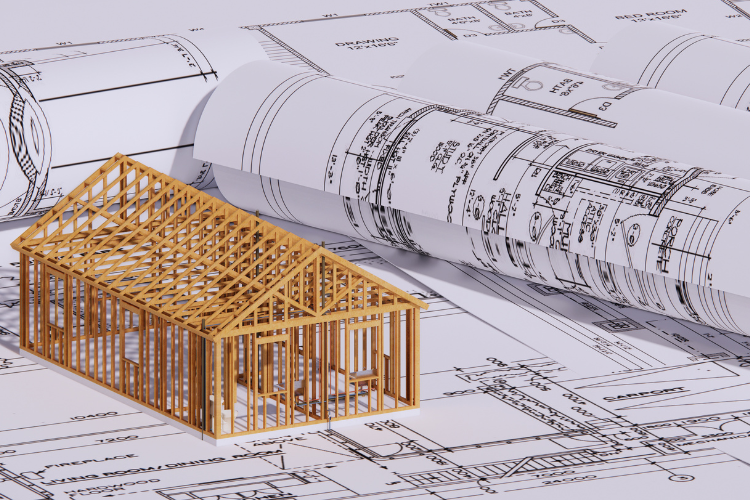While there are many challenges that arise during any fiber optic deployment, construction and reporting requirements and deploying fiber in rural areas bring some unique challenges to RDOF projects. One of the most important actions that you can take to meet these challenges is to invest in an asset management system that can meet your current needs and scale with your changing business operations.
A geographic information system or GIS allows you to both visualize the data and store all kinds of attribution information about your equipment. Managing your assets, so that you can see relationships between the data, allows you to speed up build out and meet reporting requirements that are critical to maximizing return on your project. Listed below are the top five reasons every RDOF project should use an automated asset management system.
1. Speed to Revenue
RDOF requires winning bidders to complete 40% of their network buildout by the end of year three, followed by 20% completion per year through year six. Getting your network designed, constructed and connected as quickly and efficiently as possible is paramount to meeting those milestones and maximizing return on RDOF projects. A robust asset management system can save up to 90% of network planning and design time by automating much of the time-consuming point and click process associated with mapping out future networks.
Another critical advantage of using a GIS asset management system is the capability to map network features with incredible precision. Poor network designs cost money and time. The precision of GIS increases accuracy of network design and allows you to make more informed decisions on routing and plan more optimal routes for deployment; for example, minimizing or avoiding common rural obstructions such as river crossing, railroads, interstates, BLM, National Forest, Wetlands, etc … An asset management system reduces rework in planning and engineering and allows you to deploy more fiber faster.
2. Makes the most out of your data
At this stage in the process, some RDOF awardees are in the initial routing phases while many others have likely moved into detailed design while others may be even further into the lifecycle. Most planning will focus on densifying services areas which will aid in determining the most efficient, cost effective and scalable network. It is during the planning and detailed design phases where having an asset management system, or at a minimum, a plan for managing your assets is critical.
There are a lot of map services out there and many are free. This data can provide value to a network build out regardless of size or location. Reaching out to local utility providers can be a great source of data. It is in their mutual interest to keep various service lines from being cut and to avoid locating crews to provide support.
A GIS asset management system allows for storage and visualization of information, but it can also create relationships within the data - in other words, it provides more information that allows you to improve your planning and decision making.
For instance, if you have parcel data that includes the address related to that parcel, using GIS, you can quickly convert those into points for address locations. You can then easily verify the addresses for potential access locations or serving locations for even more detailed planning.
3. Seamless communication and data sharing between designers, field and survey crews and other stakeholders
Communication is the industry we are in and yet that is often the number one blocker to efficiency in operations. Most RDOF awardees will contract out portions of the planning, design, engineering or construction phases. Using a platform that can bring everyone together, control access to and share data seamlessly, is critical to a successful deployment.
Although most RDOF awardees have begun initial data collection, it is imperative to gather, store and model the data efficiently. Doing so will give you a competitive edge when deploying your network. Given the dynamic nature of network data, refreshing data sources will be critical to your processes. Automation of planning and design workflows allows you to take on each of these challenges with efficiency and confidence in the accuracy of your data.
Creating a single source of truth and having making data accessible over a web based platform enable the business processes to eliminate data silos, enterprise wide. With an internet connection and a web-browser, data can be shared with multiple vendors, with varying degrees of access.
There are also tools within applications that allow you to share the data, for example you can publish your GIS data out to a REST service or REST endpoint. From there the data can be made available in a variety of applications, including CAD applications. In addition, visualization of the data through various dashboards and portals can allow key stakeholders to understand the progress of a project in one single interface with the ability to drill down for more data if needed.
4. Easier creation of outputs
Your asset management system should be designed to meet the baseline RDOF requirements but allow for enough flexibility and configuration to be adaptable and agile to meet your specific business requirements. Implementing quality control and quality assurance measures directly into your asset management system will allow you to align with RDOF requirements as well as any internal requirements deemed critical to your business processes.
Managing assets through the construction cycles will allow better planning, financial tracking, tasking and visibility. An asset management system will make it easier to create outputs such as BOM/BOQ and drawing packages to support planning, design, permitting and construction. Data can be integrated to allow for visualization of both potential routes and potential installation options. It can also help you plan for shorter term/immediate operations and longer term/future operations.
For more remote and rural areas there may be substantial costs for serving a small number of premises. Through proper planning and design, those costs can be marginalized by bringing services to surrounding areas that include a larger number of potential customers. This is where being able to visualize both your required build areas and potential build areas in one platform, can increase the value proposition of your deployment.
5. Eases the permitting process
Supporting permitting requirements can be a challenge as different permitting agencies have different requirements. Choosing a fiber asset management system that allows you to create permit drawings and track permits based on different criteria can save you a lot of time and headache.
A robust asset management system will allow you to filter permitting status by location, permitting authority, current status, etc. It should also allow you to input relevant information such as fees, attachments or hyperlinks to additional forms and documents. Setting up workflows that include reporting on permit statuses is essential to maintaining consistently thorough communication between your partners.
Embracing technology, specifically fiber network design and management software, can help reduce risk and bring efficiency to all phases of your new network. 3-GIS offers comprehensive software solutions that help automate some of the processes required to plan, build, design, and report on these projects to deliver:
> Increased project velocity
> Speed to revenue
> Accurate, consistent output
If you’d like to learn more about how asset management software can maximize return on your RDOF network project, please contact us here to speak with a 3-GIS team member!



